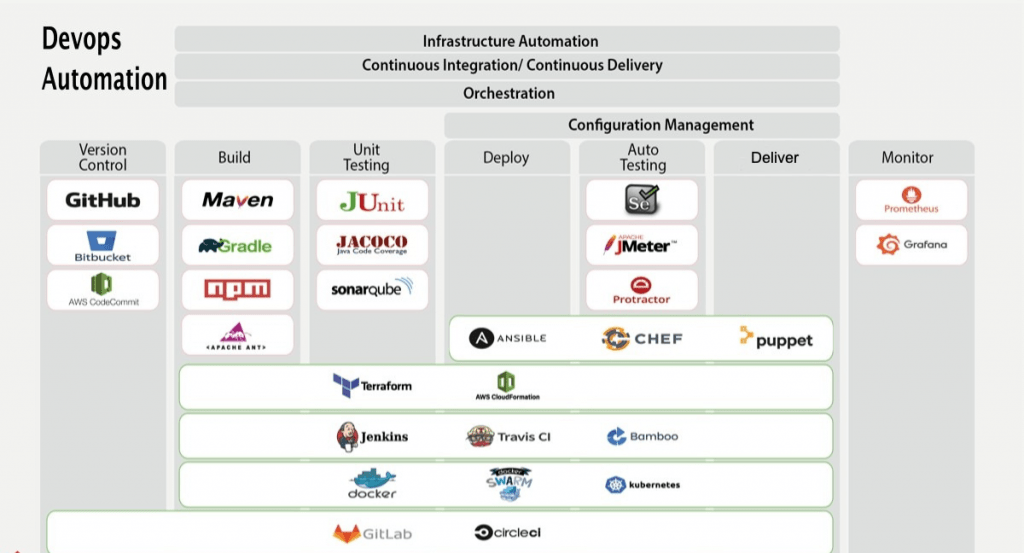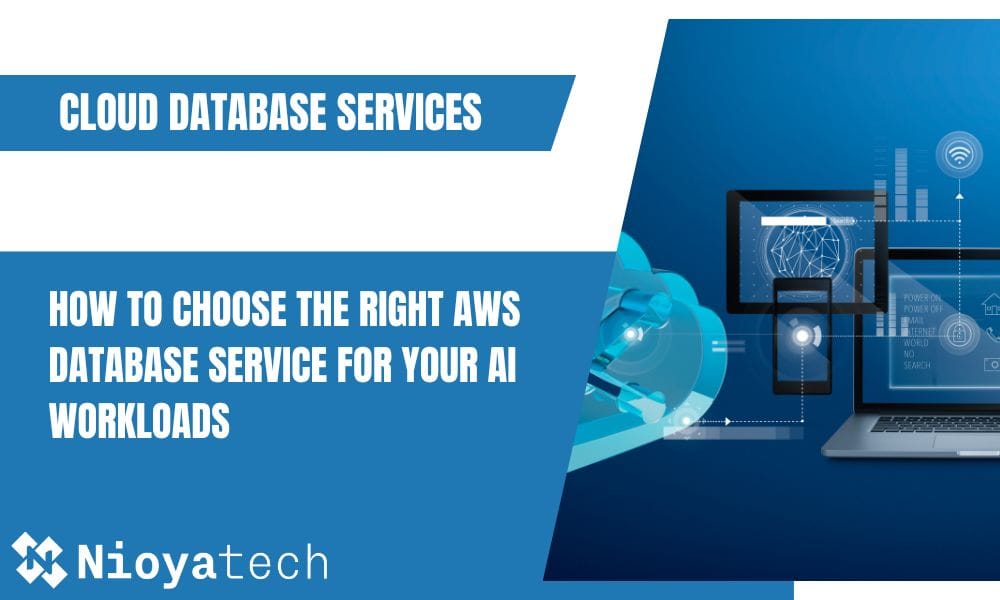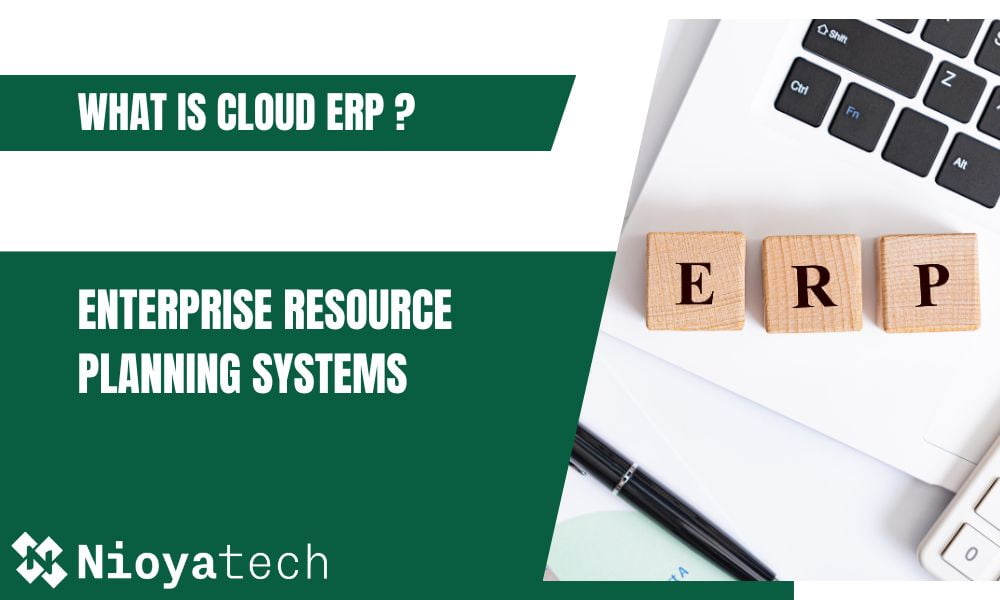DevOps methodology is a culture that bridges the gap between developers and operations staff, while DevOps tools help to automate the SDLC process. The DevOps tools focus on the automation of software development phases such as version control, build, test, deploy, and monitor.
DevOps tools assist teams in successfully completing projects and increasing customer satisfaction. This article explores effective DevOps tools that can eliminate bottlenecks while improving quality across the software development process.

DevOps Lifecycle
In today’s fast-paced digital landscape, organizations strive to deliver software quickly, reliably, and with high quality. This is where DevOps comes in. DevOps is more than just a set of practices—it’s a cultural shift that brings development and operations teams together to streamline the software delivery process. The DevOps life cycle consists of several interconnected stages, each contributing to the seamless integration of development and operations practices.
DevOps tools play a significant role in enabling and supporting various stages of the DevOps lifecycle. Here’s an overview of how DevOps tools contribute to each stage:
Plan
DevOps tools used during the planning stage help teams collaborate, manage project requirements, and track progress. Project management and collaboration tools such as Jira, Trello, or Asana facilitate task management, backlog prioritization, and team coordination.
Develop
In the development stage, DevOps tools assist with version control, code collaboration, and continuous integration. Version control systems like Git or SVN enable teams to track code changes, collaborate on codebases, and manage different versions. Continuous integration tools such as Jenkins, Travis CI, or GitLab CI/CD automate the build and integration process, allowing for frequent code merges and early error detection.
Build
Build tools automate the compilation, packaging, and dependency management processes. Popular build tools like Apache Maven, Gradle, or MSBuild help streamline the build process and ensure consistent and reliable artifact generation.
Test
Testing tools are essential for automating and executing different types of tests, including unit tests, integration tests, and performance tests. Frameworks like Selenium, JUnit, TestNG, or Cucumber assist in automating functional and regression tests, ensuring faster and more reliable testing.
Deploy
Deployment tools automate the deployment process, ensuring consistent and efficient software releases. Tools like Docker and Kubernetes facilitate containerization and orchestration, making deployments more manageable and scalable. Deployment automation tools like AWS CodeDeploy, Azure DevOps, or Ansible automate application deployments to various environments, reducing manual effort and potential errors.
Operate
Monitoring and logging tools are crucial for operations teams to track application performance, detect issues, and ensure system health. Tools like Prometheus and Grafana provide real-time insights into application behavior, infrastructure metrics, and log analysis.
Monitor
Monitoring tools continuously monitor application performance, resource utilization, and user experience. They generate alerts and reports, allowing teams to proactively identify and resolve issues. Monitoring tools like New Relic, Datadog, or Splunk provide comprehensive visibility into the health and performance of the software and infrastructure.
Now let’s check the top DevOps tools in DevOps Lifecycle.
DevOps Tools for Version Control
Version control is a system that tracks changes made to files over time. It allows different developers to collaborate on the same project and to keep track of different versions of source code. Version control is an essential part of the software world today. Git is the most well-known version control system for tracking changes in software codes. There are many git repositories to keep track of all project files in a collaborative workspace and each one comes with different features for version control.
The common DevOps tools for version controlling:
GitLab
GitLab is a source management tool for Git repositories that combines all of the necessary DevOps tools into a single platform. GitLab helps teams cut cycle time from weeks to minutes, minimize development expenses, accelerate time to market, and build more secure and compliant apps.
GitHub
In the software industry, GitHub is one of the most popular services for Git repositories. It is the largest coding community on the planet. Adding a piece of code or a project to GitHub increases its visibility. Programmers can discover source code in a variety of languages and use the Git command-line interface to create and track changes.
Bitbucket
Bitbucket is a code hosting and version control system based on Git. Atlassian is the owner of Bitbucket. Bitbucket allows developers to collaborate on, securely record, and develop project files. It connects with JIRA Software to provide traceability from the feature concept through deployment.
Bitbucket is a platform where developers can discuss and collaborate on the codebase., as well as a screen for administrators to keep track of progress, and a reliable version control system for admins.
Build Automation DevOps Tools
Build tools are software programs or utilities that automate the process of compiling, testing, and packaging software code into a deployable form, such as an executable file, library, or web application. Applications for the build process are essential parts of DevOps tools for automation, as they help to automate repetitive tasks, and ensure consistency in the build process.
Here are the DevOps tools for build automation:
Maven
Maven is a build DevOps automation tool released in 2004 by the Apache Software Foundation. It is written in Java and is primarily used for Java projects. Maven provides predefined targets for doing specific operations like code compilation and packaging.
Maven’s primary goal is to shorten the development process as much as possible. Maven focuses on several areas to accomplish this goal:
Making the build process easier,
Providing a stable build framework,
Make the transition to new functions easier.
Apache Ant
Ant is the acronym for Another Neat Tool that uses XML. It is popular for Java-based applications that have the complete portability of pure Java code. Apache ANT assists you in converting source code to executable code. Ant is a free and open-source application supplied by the Apache Software Foundation under the GNU General Public License. Apache Ant is an important part of a developer’s and tester’s daily work schedule.
Gradle
Gradle is one of the most flexible and performant open-source build automation DevOps tools. Gradle build scripts are written in a DSL such as Groovy or Kotlin. Learn about Gradle features to find out what Gradle can do. Gradle is designed to be highly adaptable and extensible in its most fundamental aspects.
Gradle completes tasks rapidly by reusing outputs from earlier executions, processing only updated inputs, and running tasks in parallel. Gradle is the official Android build tool, and it supports a wide range of popular languages and technologies.
Continuous Integration Tools


Continuous Integration (CI) tools automate the process of building, testing, and deploying code changes. This process also is called CI/CD pipeline. Among all other DevOps tools, CI/CD pipelines are the backbone of the DevOps automation process.
Jenkins
Organizations can use Jenkins to automate and accelerate the continuous integration and continuous delivery process. Jenkins integrates all aspects of the phases of the software development life cycle, including plan, coding, testing, delivering, and maintenance.
Jenkins pulls the project codes from Git, builds it, performs the written test steps on the designated nodes, and forwards the results. It perpetuates this and creates the DevOps culture.
TravisCI
Travis CI is a Continuous Integration tool that automatically detects code changes, builds the code after the change runs, and deploys test steps. TravisCI is a SaaS product, that allows running three concurrent jobs with free and unlimited builds for Open-source projects. You can also use your Github account to join up with TrarisCI
CircleCI
CircleCI is a CI/CD DevOps tool that may help your team become more efficient. It offers both a managed cloud service and a self-hosted alternative. CircleCI may be accessed on its website; there is a free tier, so it is simple to try out.
CircleCI has evolved to be one of the most widely used CI/CD solutions. Circle CI provides an environment that offers free CI/CD tools with certain limitations, as well as a variety of pricing models. With the prepared configuration file, all procedures (build/test/deployment) can be performed automatically.
DevOps Tools for Containerization
Containerization is a software deployment procedure that packages an application’s code with all of the dependencies required to function on any infrastructure. Historically, to execute any application on your computer, you had to install the version corresponding to your machine’s operating system. Containerization allows you to design a single container that operates on many types of devices and operating systems.
Docker
Docker is a virtualization technique that allows hundreds or even thousands of isolated and independent containers to run on the same operating system. Docker is one of the most popular container-based platforms currently attracting the attention of many development teams. More and more companies are choosing Docker for its reliability, performance, and functionality.
One of the greatest features of Docker is that you can test it locally before deploying it to your Test or Live environment or more diverse settings (dev, staging, pre-prod, etc..) Everything you run locally will also function in that environment. The most significant advantage of using Docker in microservices is that it lowers server costs and minimizes server resource consumption.
Docker Swarm
Docker Swarm, a Docker native mode, is a platform for managing “Dockerized” containers. Swarm makes advantage of scheduling features to guarantee that distributed containers have enough resources. Docker swarm allows you to build infrastructure that distributes heavy server loads while keeping the system operational in the case of a problem.
Docker Swarm offers; which container will run on which machine, how many replicas will work from which container, high availability, and load balancing features. Swarm does not require any installation. When we install Docker, swarm mode is installed as inactive.
Kubernetes
Kubernetes is a modular, cloud-native infrastructure platform developed by Google to manage clusters. Like Docker Swarm, it automates the scaling, deployment, and maintenance of containerized applications as a container orchestration tool. But Kubernetes’ cluster structure is more sophisticated than Docker Swarm’s.
Kubernetes supports traffic-based scalability. With Kubernetes, scaling entails generating additional pods and scheduling them to nodes with available resources.
Configuration Management Tools
Configuration management (CM) is a governance and systems engineering procedure that is used to track and regulate IT resources and services within an organization. Configuration management, when effectively managed, ensures that a company understands how its technological assets are configured and how those assets interact with one another.
Configuration management is the discipline that provides configuration changes, and maintenance operations throughout the life cycle of a system. It allows automation of all update and upgrade processes and other configuration changes related to different components of complex software systems.
Ansible, Chef, and Puppet are the best-known Configuration management DevOps tools.
Ansible
Ansible is a great tool for automating the provision of the target infrastructure and subsequent application deployment. It is a free platform developed with Python and Ruby languages that allows the servers under your management to do everything you want under a single roof and does not require any agent installation on client clients.
The most popular feature of Ansible is the ability to rapidly automate processes by writing Playbooks in YAML, which is a very simple language. With a simple yaml file, it can deploy services, add compute hosts, and supply cloud resources, services, and applications.
Chef
Chef is another tool that is among the best DevOps tools. This robust open-source tool allows you to handle and decompile data, attributes, roles, environments, and other elements. Whatever the size of your infrastructure, Chef can automate your infrastructure configuration and application deployment and manage configurations across your network. It is also compatible with most cloud computing platforms.
Puppet
Puppet is a DevOps utility that manages and automates server configuration. When you use Puppet, you specify the ideal configuration of the systems in your structure that you want to control. Puppet then manages the process of achieving and maintaining these states.
Puppet accomplishes this through the use of the Puppet main server and a Puppet agent. The code that describes your intended state is stored on the Puppet main server.
DevOps Tools for Testing
The purpose of software testing is to assure the reliability of new product releases. Testing automation lowers the requirement for human involvement. To check an application’s functioning, automated test scripts and tools can be employed.
Selenium
Selenium is a test automation DevOps tool that has been developed to write web application tests in different programming languages. It is an open-source solution that addresses the critical demand for functional testing of web applications while providing several advantages. One of the most essential features is the ability to record and replay web applications for testing, which may be done in numerous runs on various browsers. With its future releases, the Selenium community presents a bright path, and it is likely to appeal to a far broader range of industry industries in the future.
JUnit
JUnit is the most widely used unit testing framework in the Java programming language, used by enterprises all around the world. It has become a basic requirement for a Java developer to guarantee that the code is both created and tested using a set of unit test cases.
JUnit provides test assertion support. It is sold in conjunction with dummy mocking tools. Offers the ability to generate test reports while also supporting the creation and testing of Test Suites.
Infrastructure as Code DevOps Tools
Infrastructure as code is a method of coding to automate your infrastructure deployment, update, and destroy processes. Infrastructure as a Service (IaaS) is a cloud computing approach in which infrastructure resources are provided by a third party. IaC is suitable for virtual machines as well as any cloud infrastructure (IaaS).
This method enables developers to design and automatically deploy the infrastructure components needed to support applications as soon as they are built.
Terraform
Terraform is one of the well-known IaC DevOps tools on the market. It is an open-source project with tremendous versatility, supporting all of the major cloud platforms, like AWS, Microsoft Azure, and Google Cloud.
Terraform supports resource destruction via source control. This functionality is critical when working with hybrid clouds, where plans may be produced across numerous cloud providers and infrastructures utilizing the same workflow.
AWS CloudFormation
CloudFormation is an Amazon web service that provides convenience to system administrators and developers to use and manage resources offered in line with your AWS subscription, to make a quick setup with predefined configurations. You can use the predefined templates provided by CloudFormation, which simplifies the use, management, and application installation process of AWS resources, or you can create templates based on the service and application architecture that best meets your needs and apply them to your existing running applications.
CloudFormation is among the best DevOps tools for IaC, as it has versatile features. Some of the advantages of Cloudformation:
It allows defining infrastructure with code (IaC). In other words, we do not create any resource (EC2 instance, S3 Bucket..) manually, which gives us great advantages in terms of control and management.
It makes it easier for us to set up the same infrastructure in different environments.
Using version control systems such as Git enables us to follow the versions of our infrastructure through code.
Monitoring and Alerting Tools
Prometheus
Prometheus is a system that can be used to collect and store metrics from a variety of sources, with a powerful query language and a rich set of visualization tools.
Prometheus is built to be adaptable and highly scalable, with a robust query language that enables users to filter, aggregate, and alter data in real-time. It may track a variety of factors, including system-level metrics like CPU and memory use, as well as application-level metrics like request latency and error rates.
In a DevOps setting, Prometheus is frequently used in conjunction with other DevOps tools and services. It may, for example, be used in conjunction with Grafana for data visualization and dashboarding or with Kubernetes for autonomous service discovery and scaling.
Grafana
Grafana is a platform for data visualization and monitoring that can be used with a variety of data sources, including Prometheus, InfluxDB, Graphite, Elasticsearch, and more.
Grafana Query Language (GQL) is a robust and versatile querying language that allows users to filter, organize, and aggregate data in real-time. It also includes a variety of visualization tools, such as bar charts, line charts, heat maps, and gauges.
Splunk
Splunk is one the best DevOps tools for real-time monitoring, searching, analyzing, and displaying machine-generated data. It can read data from a wide range of sources, including logs, metrics, events, and other sorts of data.
Splunk is utilized for many different things, including application administration, security and compliance, IT operations, and business analytics. Users may use Splunk to search and analyze their data, produce reports and dashboards, set up alerts and notifications, and much more.
Nagios
Nagios is a monitoring system that can be used to monitor hosts, services, and network devices, with the ability to alert users in the event of issues.
Users may use Nagios to monitor a variety of factors, such as CPU utilization, storage space, network connection, and application performance. It may also be used to keep an eye on services like email servers, web servers, and databases.
Conclusion
DevOps tools are intended to assist enterprises in developing and delivering software more rapidly, reliably, and efficiently, resulting in improved business outcomes and enhanced market competitiveness.
There are numerous DevOps tools on the market, with the majority falling into one of several broad categories. While there are various approaches to embracing DevOps, each firm will select the categories and corresponding technologies based on its own needs.
Looking to streamline your software development and delivery processes with the latest DevOps automation tools? NioyaTech’s DevOps services can help you achieve your goals.
Contact us today to learn how our team of experienced professionals can help you improve collaboration, increase efficiency, and enhance the quality of your software development projects.
With the use of DevOps automation, software development has evolved to a very different dimension beyond agile. Implementing agile approaches to application development is possible, but it still has trouble delivering the code on time. There’s no doubt that you’ve heard about DevOps automation and how it can benefit teams. For example, almost all (99%) of respondents say DevOps has had a positive impact on their organization, according to the DevOps Trends Survey by Atlassian.
In this article, we will explore how effective DevOps automation can reduce roadblocks while enhancing quality throughout the software development process.
What is DevOps?
DevOps is the next step in the growth of collaborative tools and techniques for releasing better applications more quickly. DevOps is all about collaboration. The development and operations teams collaborate to build a team that assists one another throughout the SDLC process. Automating your development lifecycle enhances not only your products but also the end-user experience.
DevOps is a methodology for software development that goes far beyond just development. It is a culture of continuous collaboration, continuous development, and continuous learning.
DevOps automation is only a part of the DevOps lifecycle. DevOps brings together the talents, methods, and technologies for every part of an engineering and IT organization, from planning and creation through monitoring and iteration.

An organization using DevOps can develop and improve products faster than traditional organizations through a combination of cultural philosophies, tools, and methods.
Since the introduction of the DevOps methodology in 2007, process automation in software development has expanded greatly and moved into new domains. For example, the build, test, and deployment phases can be easily done by automation tools. Updates that once took months can now be done in days.
Why Do We Need DevOps Automation?
DevOps automation is critical to digital transformation because it enables businesses to gain organizational efficiency, unpredictability, and reliability. It also eliminates delays, freeing up time for other vital goals.
DevOps automation is the concept of automating all operational tasks in software development so that they can be completed without the need for human involvement. Throughout the DevOps process, automation may encompass the coding, testing, delivery, and monitoring phases.
The main purpose of DevOps automation is to reduce the manual burden and hence streamline the DevOps lifecycle. Automation guarantees that activities are completed regardless of whether team members are present to initiate the process or not, reducing development and deployment delays. Furthermore, automated scripts and functions give a common template that can be used in numerous deployments, eliminating the need to build configuration and code files from scratch and reducing the number of human errors.
The Benefits of DevOps Automation
The usage of automation in DevOps offers numerous advantages, including reduced downtime for IT teams, increased efficiency for corporate strategy, improved quality assurance, and cost savings.
Faster Releases:
DevOps teams make releases more frequently, with improved quality. According to the DORA “2022 State of DevOps” report;
“teams that combine version control and continuous delivery are 2.5x more likely to have high software delivery performance than teams that only focus on version control practices.”
With the right DevOps Automation tools, including test and review phases, teams may boost productivity and release more frequently while causing less disturbance.
Consistency:
Continuous testing allows developers to detect vulnerabilities and bugs more quickly. Automation allows you to discover issues and correct behavior throughout the deployment process. Because of the DevOps toolchain, results in a highly automated system are always consistent and predictable.
Scalability:
Manual procedures are far more difficult to scale than automated operations. Scale automation operations easily by adding new processes to suit the rising demands.
The availability of team members heavily confines any scalability in a manual system. DevOps automation delivers automated, cloud-based technologies with unconstrained scalability to match your organization’s needs.






